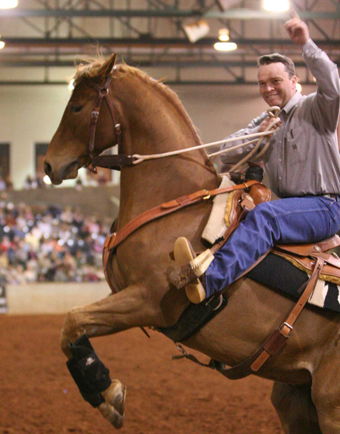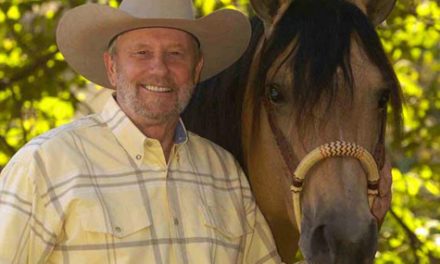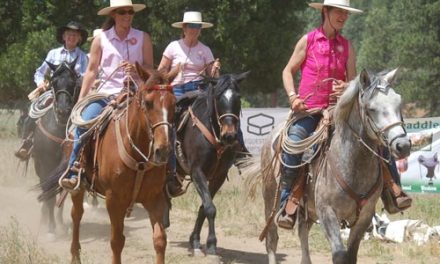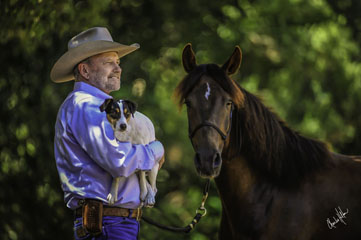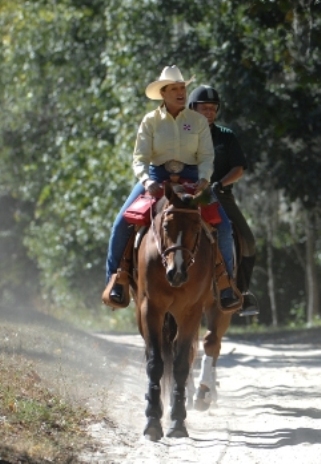
We often hear about the herd instinct and the role it plays in leadership and the development of a relationship with a horse. What we don’t hear much about, are the personalities of horses. I’ve worked with many horses over the last 20 years. I have probably worked between 25 and 30 horses every month. I’ve seen a range of personalities and out of that I have identified some very distinct personality types. In fact, I wrote a book called Building Your Dream Horse and I describe seven different personalities. The personality of a horse is an important factor to consider when choosing a horse and personality also impacts the training of a horse. We know that all horses have the herd instinct. For example, we know that when one horse bolts, they all go. We know that there is a pecking order in the herd and that a leader is always established. Also we know that horses have a fight or flight mechanism. When you corner a horse, the result will likely be an argument. Push a horse and he will likely response with a fight or he will attempt to run away. In other words the horse will buck or bolt or bury his head in the sand just like some people do. Along with these basic instincts, we need to understand that every horse has its own personality. Here are the seven basic personalities I’ve identified. See if you can identify your horse.
Compliant – This is the type of horse that most of us want to have (or should want to have) but this type probably makes up less than 5 percent of all horses. This is the horse with the mind and attitude that says, “I don’t care, whatever you want to do, just let me know and I’m happy to oblige.” The compliant horse gives easily to pressure and has a natural emotional level usually around two or three on a scale of one to ten, with ten being the highest. The handler or rider could be a youngster or a senior citizen. This is a very forgiving animal, easy to train with very low fear levels.
A horse that is down on feed and not really healthy may appear to be compliant. Once the horse is properly fed, the personality may change drastically. The horse may truly be compliant but we need to be aware of this possibility. If the horse has a dull coat and is lethargic, once it is well fed and is feeling better, it may be an entirely different horse.
Bully – The bully is extremely pushy. He will have no problem walking into another’s space and doesn’t care about anything. He has no respect for humans and often little for other horses. This horse requires a very confident handler or rider. Communication must be in black and white when working a horse who is a bully. It is important to note, if we offer too much pressure or the bully during training, we can actually get a reverse effect, the bully may become timid and fearful. All horses have the potential to become bullies if the handler allows the horse to invade his/her space. Part of the natural herd instinct is that horses establish a pecking order and a leader. We always need to be the leader.
Often with a bully horse there is a need to use more pressure than most of my clients are willing to exert. Too much pressure creates a problem but there can be no gray areas when working with a bully horse. All commands must be clear and there must be follow through to attain the expectation.
Indifferent – This horse is aloof and not social. Once you capture his mind, you may become his best friend but this usually takes a considerable amount of time and he will never be a true “people horse.” With an indifferent horse, the handler or rider must be confident, insightful and very consistent. It is hard to get this horse’s attention and to keep him focused on the task at hand. However, once the connection is made, this type of horse can actually become very nice.
Usually the indifferent horse makes a very good trail horse. This type of horse is not inclined to be buddy or barn sour. They are very independent. Most of my clients want some type of relationship with their horses and an indifferent horse become warm and fuzzy even when you capture their mind.
Timid – The timid horse usually seems quiet on the outside but he will fall apart under pressure. When working with a timid horse, the demeanor of the rider or handler must be very relaxed and quiet. We need to put pressure on such horses to raise their emotional level, but not so much that they “blow up.” Our objective is to instill confidence in them and to make them feel secure in the arena and on the trail. The rider must be very confident and very clear with his/her cues.
Nervous Nellie – This horse differs from the timid horse in that he is just nervous about everything. This horse looks at everything. He has confidence to a degree but is also concerned about everything happening around him. The Nervous Nellie is very likely to bolt if too much pressure is applied or if he is asked to do things too soon. The demeanor of the handler or rider needs to be relaxed but you cannot skirt around issues with this type of horse. An assertive person may need to tone it down a bit (in body language and tone of voice), but the behavior must not be catered to. This horse’s emotional level must be worked frequently and with greater intensity.
Next time we’ll talk about the horse that is way too smart and the two categories of the lethargic horse. We’ll also discuss the most elusive of all horses, the bomb proof horse. We’ll discuss more about understanding your horse and how to apply training principles in the most effective way.

